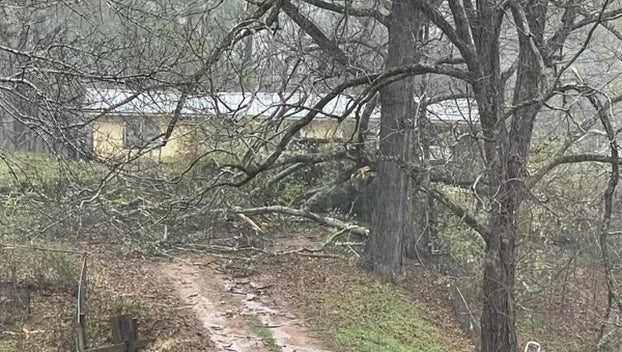Why are Mississippi teachers crowdfunding classrooms?
Published 11:24 am Friday, August 17, 2018
GULFPORT, Miss. (AP) — Kristy Clark taught in the Hancock County School District on the Mississippi Gulf Coast for 15 years, but she decided to stop teaching in the spring of 2017.
She said there are several things she will miss about being in the classroom — and a lot of things she won’t miss at all.
One of the biggest grievances for Clark, she said, was having to use her own money to buy school supplies and classroom materials for her students.
“Oh my gosh, every year you just spend so much money,” she said. “It got to the point where I could easily spend $600 or more out of my pocket.”
Clark said she was making about $28,000 when she started teaching.
“My first year, I think I was really unaware of how little is available in a classroom because I was a substitute teacher at St. Clare Elementary School in Waveland, which is no longer there,” she said. “But since I was substitute teaching, I was in fully-stocked classrooms. But the first year I got in and actually started teaching, I thought, ‘Oh God — I am not prepared for this.’ “
It’s no secret that the state’s public school teachers are among nation’s lowest paid. The base salary for a teacher in Mississippi is about $34,500.
A teacher’s pay raise package was passed by the Legislature about four years ago. Since then, voters have also rejected an amendment to the state’s constitution to fully fund education according to guidelines set forth by the Mississippi Adequate Education Program (MAEP).
According to the U.S. Department of Labor, the average pay for a teacher in Mississippi was $46,370. This can be higher or lower depending on the district and advanced degrees for teachers. The medium in neighboring Alabama was $49,790 and $50,700 in Louisiana.
A report from the National Center for Educational Statistics for the 2016-2017 school year said the state’s average teacher salary was about $43,000.
“I was making about $44,000 when I retired,” Clark said. “But I still have a family and children of my own that I have to take care of. Even with a pay raise, I was still spending money out of my own pocket to buy reading material for my classroom and basic supplies.”
Clark wasn’t talking about big-ticket, expensive items like iPads or Chromebooks — she was buying pencils, reading materials, handouts and printer ink.
“At one school, we were limited to 1,000 copies a month, so I had to do a lot of bartering with other teachers — you get some EEF money, but it’s not much and it goes quickly,” she said.
The Mississippi Department of Education said EEF money stands for Educational Enhancement Funds.
“The funds are specifically designated for certain programs and one such program is the EEF Instructional Supply Program.,” said Donna Nester, manager of School Financial Services at MDE. “The funds are distributed at the beginning of the school year via procurement cards issued to the teachers and other eligible staff.”
EEF cards are used to purchase classroom supplies, instructional materials and equipment. The cards are exempt from the state’s sales tax, Nester said.
The average EEF funding given to a teacher in Mississippi is about $350.
“Card amounts are determined by the appropriation from the Legislature and any carryover of unspent funds from the previous year,” she said. “In the last five years, the appropriation has remained consistent at $12,000,000 annually.”
“It’s gotten a little bit easier with the card because before the card, you actually had to fill out a purchase order and it would take hours and hours,” Clark said.
“I think my first year we got about $150, which was nothing. I think last year we got about $300, which is better, but when you have 150 kids, that’s like spending $2 per kid and that’s not a lot — I don’t think the state realizes how much money teachers actually put into their jobs and how little their salaries are.”
And when Clark says the EEF funds averaged out to $2 per student, that was for the whole school year.
Some schools even offer incentives such as perfect attendance as a way for teachers to get more money for classroom supplies.
Most supplies lists for Coast schools can be found online. The supplies for most students entering the first grade costs about $50 at Walmart.com. The supplies increase when students enter the third grade and the cost increases to between $70 and $100 per student.
Clark said the technology boom over the past decade created a new level of needs for the classroom, albeit an expensive need.
“In today’s classroom, most teachers aren’t using a lot of textbooks,” she said. “Technology is really helping with that with smart boards and things like that and computers and tablets, but it puts a tremendous burden on your classroom financially — I had to use DonersChoose.Org to get four Chromebooks, but I had to agree to donate them to the school before the technology department would load anything on them.”
Lora Toney teaches kindergarten at Oak Park Elementary School in Laurel. She said she has plenty of experience going into her own pocket to buy her students’ school supplies and classroom materials, especially when she was teaching in Title I schools.
“The Title I schools were very poor — I had some students who didn’t have jackets and coats, much less pencils and paper,” Toney said.
She said she began looking for alternate ways to provide classroom material for her students.
“I was a teaching assistant in elementary music and I wasn’t allowed to even get an EEF card,” Toney said. “And everything was coming out of my pocket until I found out about DonorsChoose.org.”
Donors Choose is a crowd-funding website that works as it sounds — those wishing to make monetary donations can pick and choose exactly which classroom project they would like to partially or completely fund.
“A few years later, I was teaching at Stone High School and once again, I had nothing in the classroom and I didn’t even get my EEF card until October, so I went back to Donors Choose for a project and got maps and timeline stuff, worksheets and I used it again for some projects when I was working in Hattiesburg and I got a lot of funding for basic supplies,” she said. “I have actually been chosen as a Donors Choose ambassador and I help other teachers in getting started with it.”
With no raise for public school teachers on the immediate horizon and a lack to fully fund education in the state, Clark said the demand for school supplies for students is not going to change.
And, she said, teachers will continue to pick up the bill.
“We have to buy some of our students clothes and Christmas presents and some basic necessities they need — teachers certainly don’t get their due and recognition for all they do,” Clark said.






